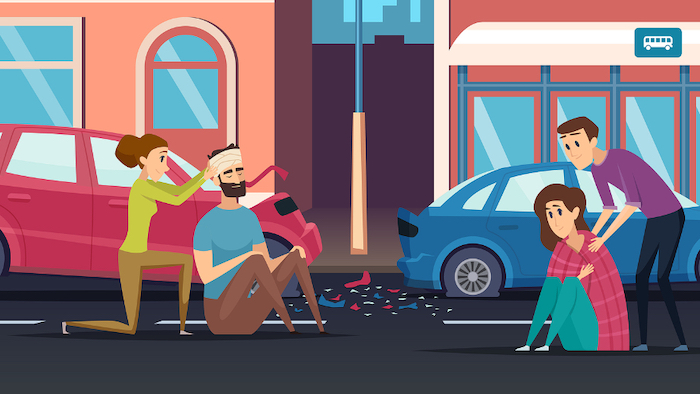
You may wonder why you need to “look for” injuries. After a car accident, injuries are obvious, right? Not always.
You can walk away from an accident thinking you’re fine and then start feeling worse over the next few days or weeks because some injuries may have delayed symptoms.
No matter when your pain appears, you can turn to pain experts. They have years of experience treating auto injuries and providing comprehensive care that includes advanced pain medicine, regenerative medicine, and medication management.
Here are the top three injuries to watch for after a car accident:
Concussions
Concussions are notorious for causing delayed symptoms. By the time your symptoms arise, you may not connect them to the car accident or consider the possibility that you have a concussion.
Delayed symptoms are especially dangerous for concussions because you may go back to your normal activities, and that’s the worst thing you can do. Even if you have minor symptoms, a concussion is still a brain injury that causes biochemical changes and cell damage in your brain.
The initial treatment for a concussion is physical and mental rest. If you stay active, you put yourself at a high risk of having a second concussion or developing post-concussion syndrome. People with the post-concussion syndrome have symptoms lasting well beyond the normal healing period, possibly a year or longer.
Watch for concussion symptoms such as:
- Headache
- Memory loss
- Confusion
- Dizziness
- Nausea and vomiting
- Loss of balance
- Difficulty concentrating
- Blurry vision
- Ringing in your ears
- Sensitivity to light and sound
- Sleep disturbance
- New depression or anxiety
Few people lose consciousness after a concussion. Don’t rule out a concussion just because you were awake and alert after your car accident.
Whiplash And Neck Pain
Whiplash commonly occurs during car accidents when the impact causes your neck to snap back and forth or side to side. The sudden, severe movement forces vertebrae to move way beyond their normal range of motion. Extreme movement may damage muscles, ligaments, nerves, and vertebrae.
You may immediately feel pain, or you may not have symptoms for days after your car accident. As symptoms appear, you experience one or more of the following:
- Neck pain
- Neck stiffness
- Headaches
- Upper back pain
- Shoulder pain
- Dizziness or vertigo
- Ringing in your ears
- Pain or tingling in your arm or hand
- Numbness in your arm or hand
Depending on the severity of the trauma, you might have trouble sleeping or experience memory problems.
Low Back Pain
Many people pull their lower back during a car accident, but they don’t feel the pain right away. After an injury, your brain sends a surge of adrenaline and endorphins. Adrenaline helps you tolerate pain (more than usual), and endorphins are your body’s natural pain relievers.
This initial response prevents pain at first. Then your symptoms get progressively worse over a few days.
You can also have delayed low back pain because it takes time for bruising, inflammation, and muscle stiffness to reach their maximum level.
The primary symptom to watch for is gradually increasing lower back pain and muscle spasms. If you also have pinched nerves, you may develop pain, tingling, or numbness in one or both legs.
When symptoms appear, connect to the pain management specialist to schedule a thorough evaluation. Getting treatment as soon as possible helps prevent an acute injury from turning into a chronic pain problem.
Precision Pain Care and Rehabilitation has two convenient locations in Richmond Hill – Queens and New Hyde Park – Long Island. Call the Queens office at (718) 215-1888, or (516) 419-4480 for the Long Island office, to arrange an appointment with our Interventional Pain Management Specialist, Dr. Jeffrey Chacko.













